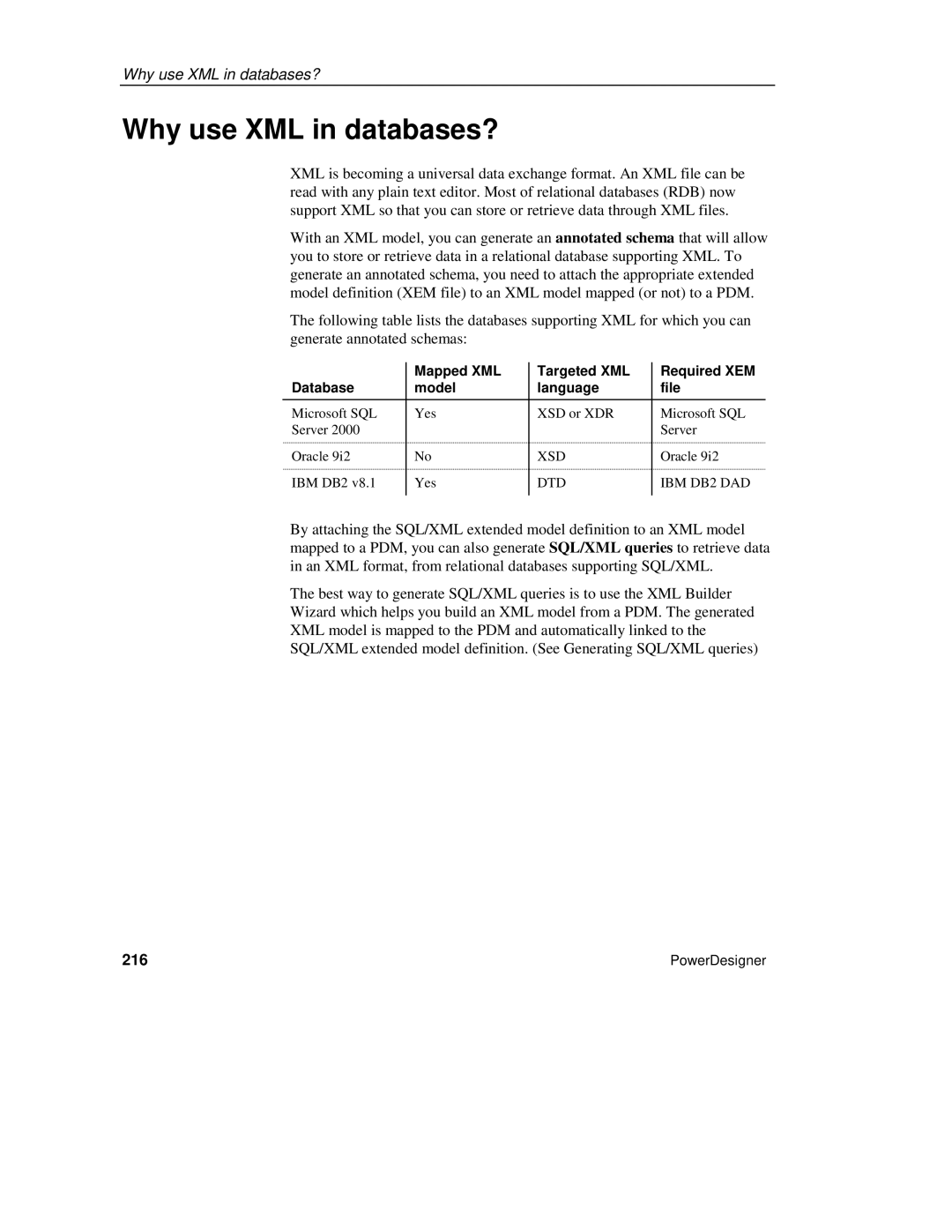
Why use XML in databases?
Why use XML in databases?
XML is becoming a universal data exchange format. An XML file can be read with any plain text editor. Most of relational databases (RDB) now support XML so that you can store or retrieve data through XML files.
With an XML model, you can generate an annotated schema that will allow you to store or retrieve data in a relational database supporting XML. To generate an annotated schema, you need to attach the appropriate extended model definition (XEM file) to an XML model mapped (or not) to a PDM.
The following table lists the databases supporting XML for which you can generate annotated schemas:
| Mapped XML | Targeted XML | Required XEM |
Database | model | language | file |
|
|
|
|
Microsoft SQL | Yes | XSD or XDR | Microsoft SQL |
Server 2000 |
|
| Server |
Oracle 9i2 | No | XSD | Oracle 9i2 |
IBM DB2 v8.1 | Yes | DTD | IBM DB2 DAD |
|
|
|
|
By attaching the SQL/XML extended model definition to an XML model mapped to a PDM, you can also generate SQL/XML queries to retrieve data in an XML format, from relational databases supporting SQL/XML.
The best way to generate SQL/XML queries is to use the XML Builder
Wizard which helps you build an XML model from a PDM. The generated
XML model is mapped to the PDM and automatically linked to the
SQL/XML extended model definition. (See Generating SQL/XML queries)
216 | PowerDesigner |
